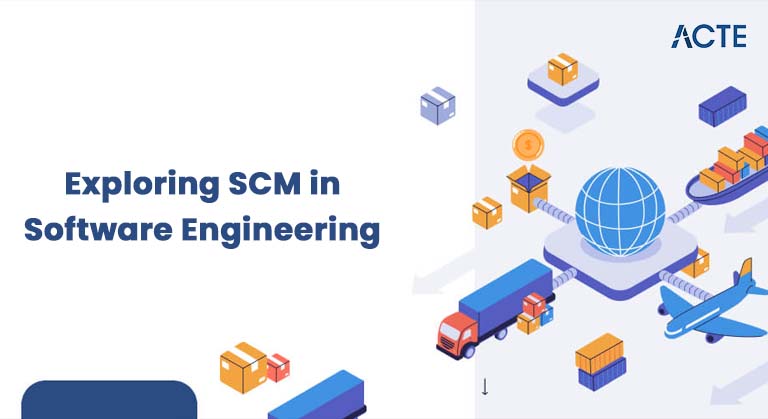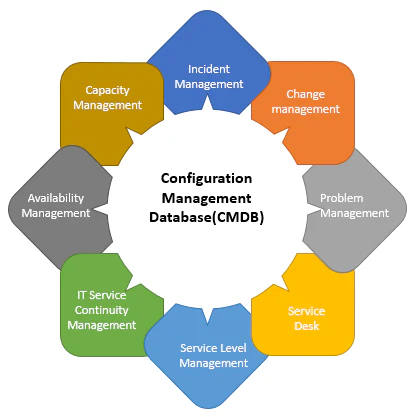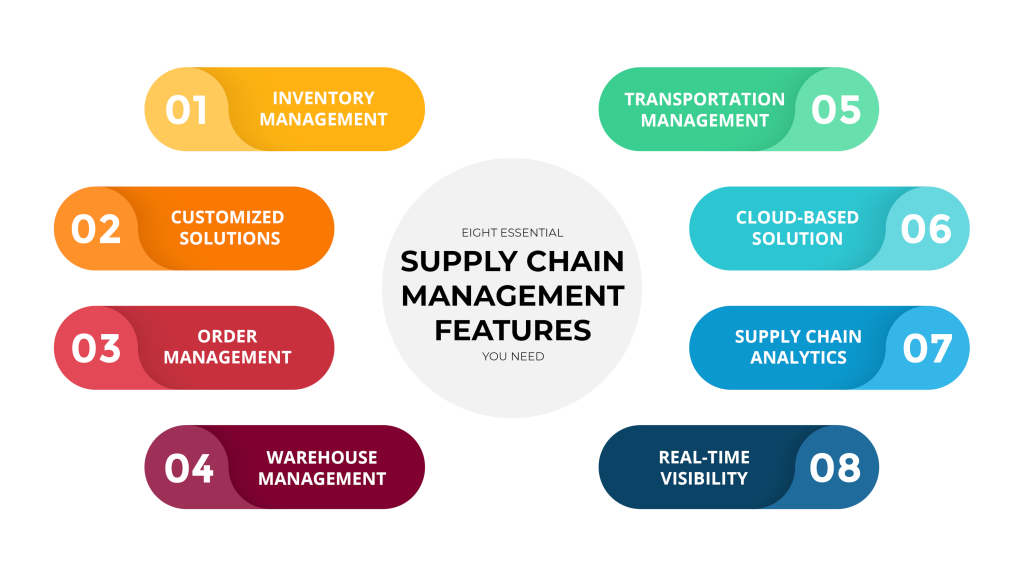
- Introduction
- What is Software Configuration Management (SCM)?
- Importance of SCM in Software Engineering
- SCM Processes
- SCM Tools
- Best Practices for SCM in Software Engineering
- Challenges in SCM
- The Future of SCM in Software Engineering
Introduction
Software Configuration Management (SCM) in Software Engineering is a critical discipline that involves the systematic control of software development artifacts and their evolution throughout the software lifecycle. SCM ensures that all components of a software system, including code, documentation, and configuration files, are properly identified, tracked, and maintained. It is vital for managing changes, ensuring consistency, and maintaining version control in large and complex software projects.By implementing SCM practices, teams can efficiently handle multiple versions of software, track modifications, and ensure that the correct version of a system is deployed in the right environment a crucial aspect taught in Enroll our Web Developer Certification Courses Additionally, SCM helps in coordinating the work of distributed teams, improving collaboration, and reducing the risk of errors or conflicts during integration. Tools such as Git, Subversion (SVN), and Mercurial are commonly used in SCM, providing capabilities like branching, merging, and rollback. Overall, SCM plays an essential role in ensuring the integrity, quality, and traceability of software products, making it an indispensable part of modern software engineering practices.
What is Software Configuration Management (SCM)?
- Version Control: SCM enables the tracking of changes to source code, configurations, and other artifacts over time, ensuring that each version can be accessed, reviewed, and reverted if necessary.
- Change Management: SCM allows teams to systematically manage and document changes made to the software, ensuring that modifications are well-documented and do not conflict with other parts of the project a concept that can be applied effectively when following a Lazy Loading in React tutorial.
- Build Management: SCM helps in automating the build process by maintaining versioned configurations and dependencies, making sure that the correct versions of components are used to generate the software build.
Software Configuration Management (SCM) is a systematic process in software engineering that focuses on managing and controlling changes to software artifacts throughout the development lifecycle. It ensures that the right version of software is used in the right environment, prevents conflicts, and provides traceability and consistency across different versions of software components.
Key Points of SCM:
- Collaboration and Coordination: By tracking changes and versions, SCM facilitates effective collaboration among team members, especially in distributed teams, reducing integration issues and miscommunication.
- Release Management: SCM ensures that only the correct versions of software are released to different environments (e.g., development, staging, production), helping to avoid errors caused by using the wrong software configurations.
- Audit and Traceability: SCM provides detailed records of changes, who made them, and why they were made, which enhances traceability and accountability in the software development process.
- Configuration Identification: This process involves defining and documenting all software components, including code, documentation, libraries, and configuration files. Each component is uniquely identified and versioned to track its changes over time.
- Version Control: Version control is used to manage different versions of software artifacts. It allows teams to track changes, maintain historical records, and revert to earlier versions if necessary. Common tools like Git or SVN are used in this process.
- Change Control: Change control ensures that changes to the software are systematically reviewed and approved. This process helps minimize disruptions, ensures that changes are well-documented, and prevents unauthorized modifications an approach often discussed when comparing a Software Engineering Degree vs Computer Science.
- Configuration Auditing: Configuration auditing ensures that the software system adheres to the established standards, requirements, and specifications. It involves regular checks to confirm that the software components are correctly configured and meet quality standards.
- Build Management: This process automates the creation of software builds by ensuring that the right versions of components are used and that dependencies are correctly managed. It helps to create consistent and reproducible software builds.
- Release Management: Release management involves planning, scheduling, and controlling the deployment of software versions. It ensures that the right software configurations are released into the appropriate environments and that deployment is smooth and error-free.
- Use a Centralized Version Control System (VCS): Choose a reliable VCS such as Git or SVN to manage source code and track changes. This ensures that all team members have access to the latest codebase, facilitates collaboration, and helps avoid version conflicts.
- Establish Clear Branching and Merging Strategies: Define a clear branching strategy (e.g., feature branches, release branches) to manage parallel development efforts. Proper merging practices ensure that changes are integrated smoothly without conflicts, preserving code stability key components of essential Software Engineer Skills.
- Implement Frequent Commits: Encourage developers to commit changes regularly with meaningful commit messages. This provides a detailed history of changes, making it easier to troubleshoot issues and understand the rationale behind each modification.
- Use Automated Build and Deployment Tools: Integrate SCM with build automation tools like Jenkins or Bamboo to create consistent and reproducible builds. This ensures that the software is always in a deployable state and reduces the risk of integration issues.
- Maintain a Comprehensive Change Management Process: Document and review every change to the software, ensuring that all modifications are controlled and approved. A formal change control process minimizes the risk of introducing defects into the codebase.
- Perform Regular Audits and Reviews: Conduct regular configuration audits to ensure compliance with project standards and quality guidelines. Periodic code reviews help identify potential issues early, ensuring that the final product meets all specifications and requirements.
Importance of SCM in Software Engineering
The importance of Software Configuration Management (SCM) in Software Engineering cannot be overstated, as it plays a pivotal role in ensuring the integrity, quality, and traceability of software throughout its lifecycle. SCM allows development teams to track, manage, and control changes to software, ensuring that the right version of the software is used in each stage of development, testing, and deployment. It enhances collaboration among team members, especially in large or distributed teams, by preventing conflicts and minimizing the risk of errors caused by incorrect or inconsistent software versions a concept that’s crucial for understanding & explore What is React Javascript and how it can be used effectively in modern development. With SCM, teams can maintain a clear record of changes, making it easier to troubleshoot issues, rollback to previous stable versions, and ensure proper documentation of modifications. Additionally, SCM aids in the management of complex software builds and dependencies, automating the process and ensuring consistency across different environments. By providing a structured approach to version control, change management, and release management, SCM helps ensure the successful delivery of high-quality software on time and within budget. Ultimately, SCM is essential for improving productivity, reducing risk, and maintaining the overall quality and reliability of software systems in dynamic and fast-paced development environments.
Excited to Obtaining Your web developer Certificate? View The web developer certification course Offered By ACTE Right Now!
SCM Processes
Software Configuration Management (SCM) involves a set of processes that ensure the effective management of software artifacts, from planning and development to deployment and maintenance. These processes help track and control changes, ensuring the consistency, integrity, and traceability of the software throughout its lifecycle.
Key SCM Processes:Interested in Pursuing Web Developer Certification Courses Program? Enroll For Web Developer Certification Courses Today!
SCM Tools
Software Configuration Management (SCM) tools are essential in automating and managing the processes of version control, change management, and configuration auditing in software development. These tools help development teams track and control changes to source code and other software artifacts, improving collaboration and ensuring consistency across different versions of the software. Popular SCM tools include Git, a distributed version control system that enables efficient branching and merging, making it ideal for large, collaborative projects. Subversion (SVN) is another widely used tool that offers centralized version control, making it suitable for smaller teams or projects with less complex branching needs a valuable tool for those pursuing a Web Developer Certification courses. Mercurial is a distributed version control system that is simpler than Git and often used for projects that require scalability and flexibility. Perforce is particularly useful for managing large codebases and binary assets, offering high performance and scalability. Additionally, Jenkins and Bamboo are often used alongside SCM tools to automate the build and deployment process, ensuring that the correct versions of software are deployed into different environments. Other tools like ClearCase and TFS provide integrated SCM capabilities along with support for enterprise-level project management. Overall, SCM tools streamline workflows, improve productivity, and ensure high-quality, error-free software delivery by managing complex software configurations.

Best Practices for SCM in Software Engineering
Implementing best practices in Software Configuration Management (SCM) is essential for ensuring smooth workflows, efficient version control, and successful project delivery. By adhering to these best practices, software teams can improve collaboration, reduce errors, and ensure that software configurations are consistently managed throughout the development lifecycle.
Key Best Practices for SCM:
Challenges in SCM
Software Configuration Management (SCM) plays a vital role in maintaining the integrity and consistency of software throughout its lifecycle, but it also comes with several challenges. One of the primary challenges is handling complex versioning. As software projects evolve, managing multiple versions and ensuring that the correct one is deployed in the right environment can be difficult, especially in large teams or distributed settings. Collaboration across teams can also pose issues, as inconsistent practices, conflicting changes, or poor communication may lead to integration problems.Another challenge is scaling SCM practices for large projects, where managing an extensive codebase and numerous configurations can become cumbersome without proper tools and processes a challenge that can be addressed when working with complex Angular Components. Maintaining consistency across environments is another hurdle, especially when different configurations are used in development, staging, and production. Additionally, tool integration can be complex, as many SCM tools need to be integrated with other development tools like issue trackers, build systems, and deployment pipelines. Security and access control is also a concern, as ensuring that only authorized personnel can make changes while maintaining a traceable history of modifications is critical. Lastly, training and adoption can be challenging, as teams must be well-versed in SCM practices and tools to leverage them effectively, making continuous learning a necessary component for success.
The Future of SCM in Software Engineering
The future of Software Configuration Management (SCM) in Software Engineering is poised for significant transformation as software development practices evolve. With the increasing adoption of agile methodologies and DevOps practices, SCM will become more tightly integrated into continuous integration and continuous delivery (CI/CD) pipelines. Automation will continue to play a pivotal role, enabling faster and more efficient version control, change management, and deployment. AI and machine learning technologies are expected to enhance SCM tools by predicting potential conflicts, automating repetitive tasks, and optimizing change management processes. Furthermore, with the rise of cloud-based development environments, SCM tools will increasingly rely on cloud infrastructure to provide scalability, flexibility, and real-time collaboration across geographically dispersed teams a trend that aligns with the skills taught in Web Designing Training programs. As software systems become more complex, configuration as code will become more prevalent, where configurations are treated as versioned code, enabling easier management and reproducibility. The integration of security features within SCM tools will also grow in importance, ensuring that software components are both reliable and secure from the outset. Additionally, the growing emphasis on open-source development will make SCM practices more transparent, leading to enhanced collaboration and innovation. Ultimately, the future of SCM will be marked by greater automation, smarter tools, and an increased focus on integration with broader software development ecosystems.

